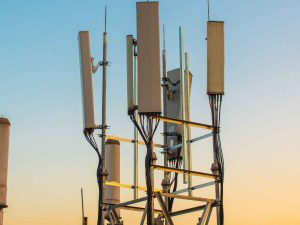5G RAN Practitioner Workshop

Course Overview
This course provides an in-depth overview of the latest 5G requirements, specifications and standardization. Participants will learn how to develop highly optimized 5G signalling call flows and network architectures and identify key parameters for optimizing network performance in macro and indoor cellular deployment scenario.
After attending this course, participants will have a comprehensive understanding of 5G RAN technology and its practical applications.
Target Audience
This course is designed for professionals who are interested to understand the revolution in Radio Access Network.
- Radio and Packet Core Engineers / Managers
- Project Managers
- IP Engineers
- Packet Core Engineers
- Technical Product Managers
- Technical Marketing Officials
- Technical Strategy Officials
- IT Managers
- C-Level Decision Makers & Executives
Duration & Training Format
- Classroom: 5 days
- LIVE Virtual: 35 hours
*Note:
- A minimum of 8 or more participants is required for a Classroom session to commence.
- A minimum of 6 or more participants is required for a LIVE Virtual session to commence.
- LIVE Virtual courses can be conducted for 5 hours or 7 hours daily. Please note that the number of training days will be extended if you opt for 5 hours daily.
Upcoming Course Dates
There are no upcoming course dates currently scheduled for this course. If you are keen on attending this course, please register your interest and indicate your preferred start/end training dates via our course enquiry form for us to open a Classroom/LIVE Virtual class schedule for this course.
Course Objectives
This course aims to equip participants with the theoretical and practical skills needed to perform 5G network planning and optimization. At the end of this course, participants will be able to:
- Describe what 5G is
- Describe the 5G technology drivers
- List the 5G features and their benefits
- Describe the 5G network architecture and its key technologies
- Illustrate the 5G architecture and components
- Explain the RF, PHY, MAC and core network operation of 5G
- Describe typical use cases and deployment scenarios
- Describe the conditions necessary to support 5G deployments
- Describe how to deploy 5G small cells for their coexistence with pre-5G macro cells
- Describe advanced wireless technology concepts like massive MIMO, virtualized RAN, and more
- Calculate the link budget in 5G for different deployment scenarios
- Practically design the RAN for indoor, outdoor, and hybrid environments
- Use best practices to optimize the RAN
Course Outline
- 5G Requirements and Specifications
- 5G Vision
- 5G Service Requirements & Capabilities
- Resilience of the Network
- Internet of Things (IoT) and Device-to-Device Communication
- 5G Standardization
- 3GPP Evolution and 5GPP
- 5G Infrastructure PPP
- Role of Different Fora and Standardization Groups (e.g. IEEE, METIS Project, ETSI, 3GPP etc…)
- 3GPP Release Content (Rel 15, 16, 17)
- 5G Architecture Overview
- Access Network Architecture
- Evolution of the gNB and ng-eNB and Functionalities
- Cloudification of RAN Architecture
- The Centralized and Distributed Units Options
- RAN UP/CP Split and ORAN, C-RAN/D-RAN
- SA vs. NSA
- Core Network Architecture Overview
- Multi-RAT Dual Connectivity
- 5G RAN/Core Sharing Types
- Use Cases (eMBB, FWA, mMTC, URLLC)
- 5G NR
- 5G Spectrum
- 5G NR Frame Structure
- Radio Parameter Comparison (LTE & NR)
- Numerology & Resource Allocation
- NR Channel Structure (Logical, Transport, Physical, DL, UL)
- TDD vs. FDD Configurations
- Common Resource Blocks
- Bandwidth Profiles
- BW Calculation
- Use Cases Subject to (subcarrier spacing, Frequency, latency and cell size)
- UE Categories
- Dual Carrier and Connectivity
- Carrier Aggregation
- Supplemental Uplink Layer
- Dynamic Spectrum Sharing
- Cross Link Interference
- 5G MIMO
- RF Propagation Basics
- MIMO Overview
- MU-MIMO, SU-MIMO
- Massive MIMO
- Antenna Configurations
- Analog & Digital Beamforming
- Beam Management
- Active Antenna Units (AAU)
- HW Architecture
- System-Level Performance
- 5G NR-Core Protocols
- UE-RAN CP/UP Protocol Stack
- UE-5GC CP/UP Protocol Stack
- Layer 3 (RRC) Functions
- Layer 2 Functions
- 5G Call Flows
- NR States
- Beamforming Management States
- Initial Attach Procedure
- Connection Establishment Flow
- Setup of a PDU
- Intra-system, Intra/Inter-RAT Mobility Procedures and Flow
- 5G Slicing Flows
- Call Flows in Network Sharing
- Call Flows of 5G Roaming
- 5G Network Design & Planning General Parameters
- Operating Bands
- Duplex Modes
- Subcarrier Spacing and Channel Bandwidth
- Maximum Allowed Pathloss (MAPL)
- EIRP per Carrier in dB.
- Propagation Models
- Digital Tooling and Datasets
- Traffic Mapping
- Planning Pipeline
- 5G Macro and Indoor Cell Planning
- Dimensioning Flow
- Beamforming-Based Design
- 5G Link Budget (Hands-On Lab)
- Inputs and Steps
- Parameter Estimation
- DL/UL Budget Calculations
- RF Surveys & Radio Model Tuning
- Coverage Dimensioning Concept
- EIRP (Equivalent Isotropic Radiated Power)
- Resource Allocation
- Transport Block Size
- Cell Edge User Throughput Requirement
- Interference Margin Estimation
- Maximum Allowable Path Loss
- Cell Range Calculation
- Downlink Throughput at Uplink Cell Edge Estimation
- Site Layouts and Number of Sites Calculation
- 5G Macro and Indoor Design Example
- Example: 5G Link Budget 3.5GHz & 28 GHz
- Capacity Dimensioning
- Dimensioning Steps – Detailed Walk-Through
- Cell Range Calculation – Example
- Site Area – Example
- Coverage Based Dimensioning – Example
- Distributed Antenna System for Indoor 5G
- Indoor Planning Best Practices
- 5G Parameter Optimization
- PCI Planning
- RACH Planning
- Power Control
- TA & TNA Planning
- Cell Selection and Reselection (Mobility Scenarios)
- Interworking with Non-3GPP Network Optimization
- Service Specific Optimizations
- 5G Deployment Considerations
- 5G Indoor Services Requirements
- High Propagation and Penetration Loss
- Issues with Passive Distributed Antenna Systems
- Needs for Frequency Bands Hierarchical Networking
- Holistic Deployment Strategy
- Spectrum-Related Issues in Deployment
- Indoor Outdoor Interference Mitigation Best Practices
- Cross Link Interference Mitigation
- Synchronization Issues and Best Practices
Note: A Certificate of Completion will only be issued upon achieving at least 75% attendance for the course.
Pre-requisites
- A basic understanding of IP-based communications is highly recommended
- An understanding of current 4G air interface and core network technologies
- Reasonable knowledge of core networking and functions
- Experience with IT infrastructure (i.e., ethernet, switches, routers)



